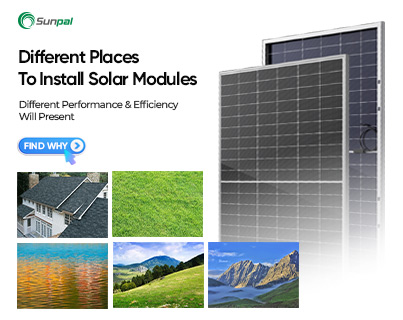
Solar power, an abundant and renewable energy source, is an excellent alternative to fossil fuels. It not only benefits the environment by reducing carbon emissions but also aids in cutting down electricity bills. The heart of solar power lies within solar panels, a technology that converts sunlight into electricity. However, a critical factor that determines the power output of these panels is their placement, just like I mentioned on a previous blog post "Evaluating Roof Suitability". As a leading solar panels supplier, we understand the importance of maximizing power output and provide in-depth guidance on optimal solar panel installation.
Understanding Solar Path
To effectively harness solar energy, understanding the solar path is vital. This term refers to the sun's apparent movement across the sky from sunrise to sunset. Solar panels absorb sunlight and convert it into electricity; therefore, their orientation towards the sun significantly affects their efficiency. Interestingly, the solar path is not constant and varies with changing seasons. During summer, the sun reaches its highest point, resulting in longer days, while in winter, it is at its lowest, leading to shorter days. Knowledge of the solar path helps in determining the optimal placement and orientation of solar panels, thereby maximizing power output.
Ideal Positioning and Angles for Installing Solar Panels
The positioning and angling of solar panels are critical factors impacting their efficiency. An often-used concept in this context is the latitude tilt. This refers to setting the panel tilt angle equal to the latitude of the location. This angle is considered most effective for year-round energy production as it aligns the panels to absorb maximum sunlight throughout the year. Moreover, in the northern hemisphere, panels should ideally face true south, while in the southern hemisphere, they should face true north to receive maximum sunlight. By understanding and correctly applying these principles, one can significantly enhance the power output of solar panels.
Top Locations for Solar Panel Installation
Identifying the right location for solar panel installation is as important as understanding the solar path and panel angles. One of the most common locations is roofs, both flat and slanted. They are often unobstructed and receive ample sunlight. However, factors like available space, roof material, and shading from nearby structures need to be considered. Ground installations are an excellent alternative for properties with large land areas. They provide easy access for maintenance and can be positioned more flexibly to catch maximum sunlight. Innovative locations like carports and parking lots offer dual benefits of providing shade while generating power.
Solar Tracking Systems
Solar trackers are advanced devices that continually orient solar panels towards the sun, ensuring maximum sunlight absorption. These systems can significantly boost power output, particularly in regions with high solar irradiance. Despite offering increased power output, solar trackers entail higher installation and maintenance costs compared to fixed installations. Solar trackers have been successfully installed in large-scale solar farms and commercial buildings, demonstrating their effectiveness in enhancing solar power output.
Understanding Solar Irradiance and Power Output
Solar irradiance is a measure of the power per unit area received from the sun. It is a critical determinant of a solar panel's power output. The more solar irradiance a solar panel receives, the higher its power output. Correct placement and angling of solar panels can maximize their exposure to solar irradiance, leading to increased power output. Therefore, understanding the concept of solar irradiance is crucial for maximizing solar power output.
Local Climate and Weather Factors
Local weather conditions such as fog, rain, and snow can significantly affect the power output of solar panels. For instance, fog and rain reduce the amount of sunlight reaching the panels, while snow can completely block sunlight. As a solar panels supplier, we provide guidance on how to tackle these weather-related challenges. One effective method is installing panels at an angle that allows snow to slide off, thereby minimizing the impact of snowfall on power output.
Regulatory and Other Considerations
Solar panel installation often involves understanding and following local building codes, regulations, and permits. Homeowners Association (HOA) rules may also influence where and how solar panels can be installed. Non-compliance with these rules can lead to legal complications and fines. Therefore, it is imperative to get a professional solar assessment to understand the local regulations before proceeding with the installation.
Last But Not Least
Maximizing solar power output involves more than just installing solar panels. It requires understanding the solar path, determining the ideal panel positioning and angles, considering local climate factors, and complying with regulatory considerations. We recommend homeowners seek professional advice from a reliable solar panels supplier to ensure efficient and effective solar installation. As we move towards a more sustainable future, harnessing the power of the sun has never been more important.